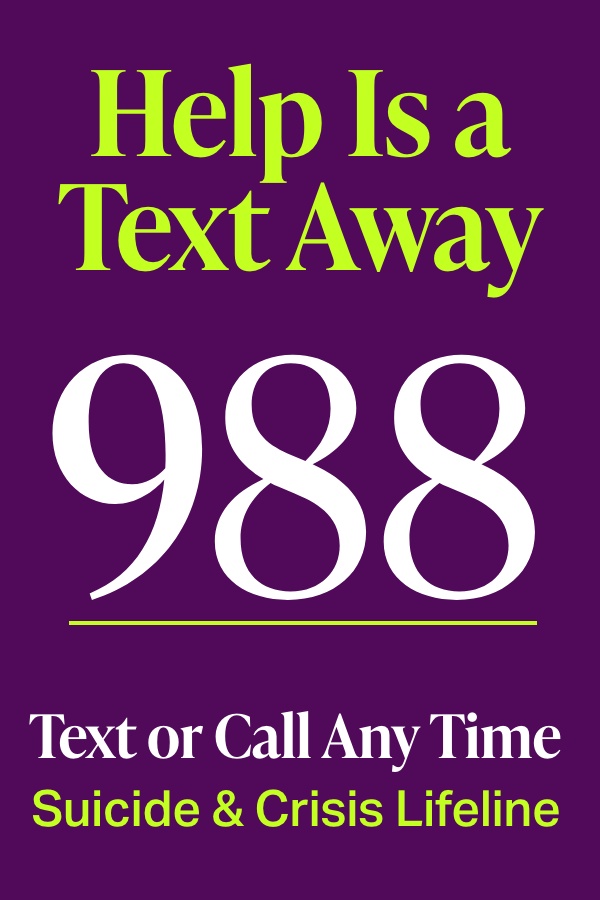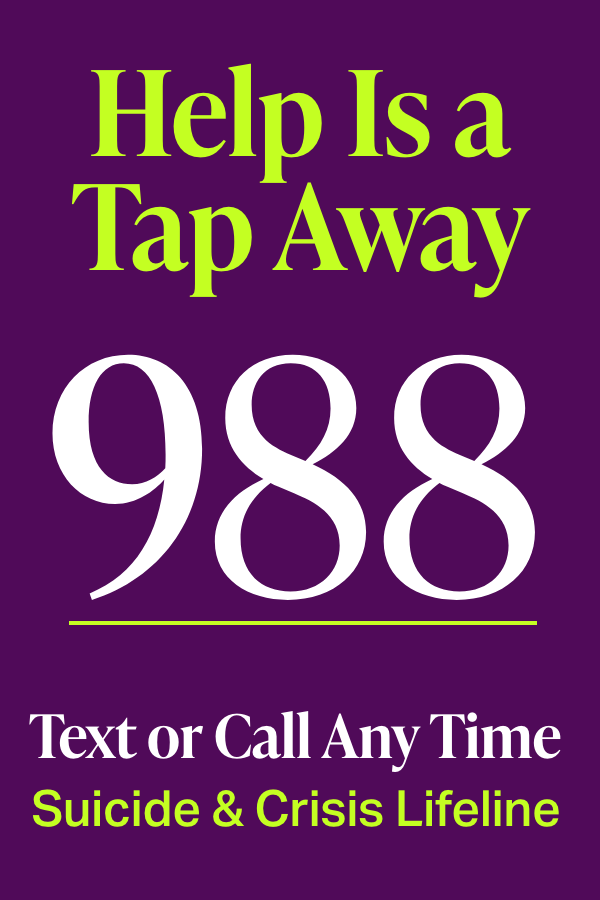What does attention deficit hyperactivity disorder, or ADHD, look like? Obvs, you say: a disruptive boy who isn’t paying and attention and can’t sit still in the classroom.
But what can ADHD really look like? A woman who you think has depression. Or anxiety. Or obsessive-compulsive disorder (OCD). It can look like the friend whose California Closets quickly become more cluttered than a California highway. Or your star coworker, who seems always on but secretly confides about her lack of confidence.
Issue is, many of these women are as clueless about their ADHD as Cher Horowitz was about her love life (Gen Z: have we lost you?). And by “many,” we mean millions. Why is that? What, actually, are the signs of ADHD in women and girls?
So…What’s Your ADHD Type?
Attention deficit hyperactivity disorder has three subtypes:
- primarily hyperactive-impulsive ADHD (the most well-known)
- primarily inattentive ADHD
- a combination
While boys with ADHD are often physically high-strung, aggressive, and disruptive—more obvious signs of the condition, which lead to earlier intervention—girls often act differently. So much so, research has shown boy-to-girl ADHD diagnoses to be roughly 3 to 1, and as high as 9 to 1.
For those with XX chromosomes, attention deficit hyperactivity disorder may as well be called the opposite: inattention non-hyperactivity disorder. It’s probably the key reason many women and girls with ADHD don’t know they have it.
The most dominant signs of ADHD in girls are often internal versus external, and they often present as part of the inattentive—versus hyperactive—subtype, says a study published in The Primary Care Companion for CNS Disorders. “They’re the little girl who sits in the back of the room quietly staring out the window and twisting hair in her finger,” says Boston psychiatrist Edward Hallowell, M.D., coauthor of ADHD 2.0 and founder of The Hallowell ADHD Centers.
Why Women Get the Shaft with ADHD Diagnosis and Treatment
We mentioned depression, anxiety, and OCD above. Research shows that as many as 75 percent of children with ADHD may have other psychiatric disorders. Consider this equation:
Less-common signs of ADHD in girls
+
symptoms of other mental health issues
=
lack of ADHD diagnoses in girls
And with women nearly twice as likely as men to be diagnosed with depression or anxiety—according to the Mayo Clinic and the Journal of Psychiatric Research, respectively—the mix-up in adulthood, while not acceptable, isn’t a complete shocker.
GOTTA READ: 21 Alternatives to Therapy That Work
To confuse things more, anxiety, depression, and OCD can also cause girls and women to subconsciously hide their ADHD symptoms by either internalizing them or becoming, as Anita Daniels-Rodriguez, M.D., a pediatrician in Allentown, PA, puts it, “professional maskers,” making it extremely difficult for loved ones to notice a significant and life-affecting problem.
And because their anxiety signs are more noticeable than their ADHD symptoms, medical providers may only treat the anxiety or depression without even evaluating for ADHD, according to the organization Children and Adults with Attention-Deficit/Hyperactivity Disorder (CHADD).
Then come hormones, which can strongly affect the symptoms of both ADHD and anxiety and can seriously complicate things. Natural hormonal fluctuations related to both a girl’s age and menstrual cycle can worsen some symptoms while diminishing others—and these changes can play a role in a delayed diagnosis.
“We’re kind of catching up now,” says Washington, D.C., developmental pediatrician Patricia Quinn, M.D., who researches the effects of ADHD symptoms in women and girls. In the past, she points out, men received an ADHD diagnosis ten times more often than women—a trend backed up by a 2018 CDC study: From 2003 to 2015, the number of ADHD medication prescriptions filled by reproductive-age women skyrocketed 344 percent.
How Much Does an ADHD Diagnosis Matter?
Four letters, two words: a lot.
“ADHD can be a very dangerous disorder to ignore, especially in girls and young women,” says Dr. Daniels-Rodriguez. “Failure to treat ADHD can cause a downfall in academic performance, impulsive behaviors, and extremely low self-esteem.”
Indeed. A long-term study, the Berkeley Girls with ADHD Longitudinal Study, followed 140 girls with ADHD into adulthood and found they had “sizable disadvantages and deficits” in life compared to those without ADHD. These disadvantages hit both work and family life, including a negative effect on psychological well-being. While other adults with ADHD “may appear to function normally,” per that Primary Care Companion study, “they might expend excessive amounts of energy trying to overcome their impairments.” No bueno.
WANT MORE? Sign up for our FREE weekly newsletter!
If you do find out you have ADHD and start on medication, you should speak to your doctor, as these drugs could have an effect on your baby during early fetal development.
Let’s Look at Commonly Missed Signs of ADHD in Women
Wondering if you might have another four-letter diagnosis you didn’t realize? Check out these six often-ignored ADHD symptoms in women, and remember: Knowledge is step one. If it turns out you could have ADHD, you’ll be able to take control and get the help you may need.
ADHD Symptom in Women: Waking Up and Falling Asleep is an Endless Challenge
Do you set 20 alarms and still sleep through them? Do you spend the majority of sun-up feeling as sluggish as Squidward? Waking up early in the morning is difficult for most, but for those struggling with ADHD, it can be brutal.
ADHD sometimes causes a significant lack of motivation, says Dr. Daniels-Rodriguez. The smallest, most “normal” tasks can feel like the biggest chore—including getting out of bed—to someone with ADHD. Also, people with ADHD can be heavy sleepers.
That is, once they’ve fallen asleep. Dr. Daniels-Rodriguez describes ADHD in the brain as “the engine that never stops running.” This could be a sign of depression or anxiety, however, so it’s important to seek professional help if you have these sleep patterns.
ADHD Symptom in Women: Your Mind Has a Mind of its Own
In anxiety, depression, OCD, and ADHD, that Energizer Bunny brain can also cause racing thoughts that interfere when you’re trying to concentrate on something important. When you’ve got ADHD, it can feel impossible to stay engaged because it feels impossible to control your thoughts and actions.
Intrusive thoughts may as well be waving a red flag, they’re that big of an ADHD tipoff. They’re also an indicator of depression, anxiety, and OCD. If you’re being treated for one of those other disorders and feel your intrusive thoughts aren’t lessening, ADHD could be the culprit—especially if these intrusive thoughts are what’s keeping you up at night or preventing you from concentrating on important things.
ADHD Symptom in Women: Organization Tools Don’t Do Much
So you can’t exactly keep your room clean. Your work desk is home to paper piles and tchotchkes—even when you despise tchotchkes. (No. More. Precious. Moments, Mom!) People may try to help, offering solutions like planners and Marie Kondo videos. But what they don’t realize is that organization tools aren’t worth much to those with ADHD.
Before you go self-flagellating, consider this: Organization skills don’t have anything to do with your ability to be organized. When you have ADHD, you lack organization because you’re too distracted by everything else happening around you to focus on straightening out one part.
Not every woman with ADHD is a hot mess. But here’s a clue: When you’ve done all the typical things other people do to organize themselves—and found it harder and less effective—you could have ADHD. (Or you might just be a messy person. Go figure.)
ADHD Symptom in Women: You’re Not a Big Fan of Yourself
“Why isn’t this done yet? Why can’t you be still? Why can’t you listen?” Dr. Daniels-Rodriguez points out that a child with ADHD is continually hearing this kind of negative feedback, which, in turn, makes low self-esteem a byproduct of ADHD.
This is no small issue, especially for girls entering their teen years, when the evil ADHD superpowers of low self-esteem and impulsive decisions can lead to destructive behavior. And the effects move with them into adulthood: Girls with ADHD have higher rates of self-harm and are more likely to end up in abusive relationships.
ADHD Symptom in Women: You Can’t Bear Boredom
Ennui: It’s a part of life. For those who don’t have ADHD, free time can mean sitting back, relaxing, throwing a little Ted Lasso on the screen.
But when you have ADHD, boredom can feel legit oppressive. Sometimes, you’d rather be doing something—anything, even if you dislike it—because relaxing is virtually impossible…because you hate being alone with your thoughts. Your thoughts are never silent, and you need something much louder than Mr. Lasso to distract you.
This is why boredom in ADHD can become dangerous. It can lead to impulsive actions as an attempt to shush the intrusive thoughts.
ADHD Symptom in Women: You Push Yourself Harder than Anyone You Know
People may look at a woman with ADHD and assume she isn’t trying hard enough—even if she’s busting her butt to keep up. While motivation seems to come magically to others, it requires all the bones in an ADHD body to join like an army and summon the needed inspo.
“Often, you’ll see women compensate extremely well,” says Michelle Frank, Psy.D., coauthor of A Radical Guide for Women with ADHD: Embrace Neurodiversity, Love Boldly, and Break Through Barriers. Socialized to care for others, women with ADHD are also socialized to self-sacrifice in a way that often is harmful.
Many women are raised as glue, the force that holds everything together, says Frank. To balance work, family life, and their own emotions almost effortlessly. An impossible mental task for any woman, much less one with ADHD, who “really internalize this idea that, ‘It’s my fault, I’m too much and not enough at the same time,’” Frank explains. “They end up having this deep trauma response from not being understood, being invalidated by those without the struggle of ADHD, and not being able to get the help and validation they need and deserve.”
Think You Might Have ADHD?
Make an appointment with your doctor to describe your symptoms, says Dr. Daniels-Rodriguez. They’ll likely use what’s called the Vanderbilt assessment to help suss out a potential ADHD diagnosis. “Vanderbilt is extremely specific to ADHD,” she says. “It can be identified in the first 13 questions.”
GOTTA READ: How to Tell Your Parents You Want Therapy (Even as an Adult!)
Dr. Daniels-Rodriguez has seen women respond to proper therapy and medications at any age, which is why getting that diagnosis is so critical. There are many different types of therapy that can help. If you’ve had issues controlling unhealthy actions, behavioral therapy is likely best. Social skills and general outlook on life on the slightly sucky side? Social skills group therapy can help.
Medication is an option, too. Whatever type of ADHD you have, there’s a med for that! The most commonly prescribed for adults with ADHD are methylphenidate (brand names include Ritalin, Concerta, Daytrana, and Focalin), and amphetamines (Adderall, Dexedrine, Vyvanse).
“Good treatment is truly tremendous,” says Dr. Daniels-Rodriguez. “It is so important to actively intervene in terms of counseling and behavioral therapy to ensure those with ADHD who have felt like they’ve come up short of their potential, actually able to reach their potential.”
Additional reporting by Ava Leone
Sign up for our free newsletter
Legit tips and cool copes, delivered straight to your inbox.
By completing this form you are signing up to receive our emails and can unsubscribe anytime.
- Skogli E, Teicher M, Andersen P, et al. ADHD in Girls and Boys—Gender Differences In Co-Existing Symptoms and Executive Function Measures. BMC Psychiatry. November 9, 2013.
- Quinn P, Madhoo M. A Review of Attention-Deficit/Hyperactivity Disorder in Women and Girls: Uncovering This Hidden Diagnosis. The Primary Care Companion for CNS Disorders. October 13, 2014.
- Depression in Women: Understanding the Gender Gap. Mayo Clinic. January 29, 2019.
- McLean C, Asnaani A, Litz B, Hoffman S. Gender Differences in Anxiety Disorders: Prevalence, Course of Illness, Comorbidity and Burden of Illness. Journal of Psychiatric Research. August 2011.
- Anderson K, Ailes E, Danielson M, et al. Attention-Deficit/Hyperactivity Disorder Medication Prescription Claims Among Privately Insured Women Aged 15–44 Years — United States, 2003–2015. Centers for Disease Control and Prevention. January 19, 2018.
- Owens E, Zalecki C, Hinshaw S. The Berkeley Girls with ADHD Longitudinal Study. Oxford Academic. October 2016.
- Ginsberg Y, Quintero J, Anand E, et al. Underdiagnosis of Attention-Deficit/Hyperactivity Disorder in Adult Patients: A Review of the Literature. The Primary Care Companion for CNS Disorders. June 12, 2014.
- Zurhellen W, Lessin H, Chan E, et al. Caring for Children With ADHD: A Practical Resource Toolkit for Clinicians, 3rd edition. American Academy of Pediatrics.





